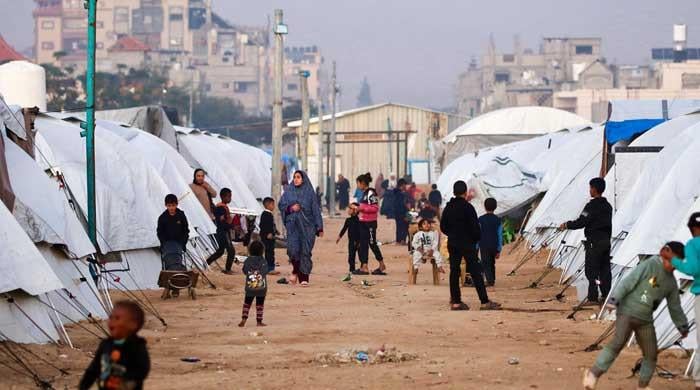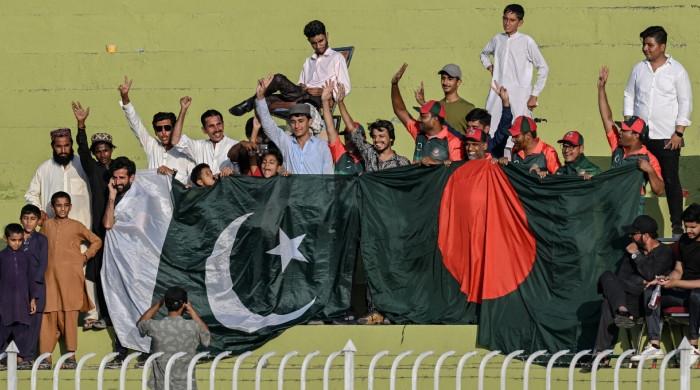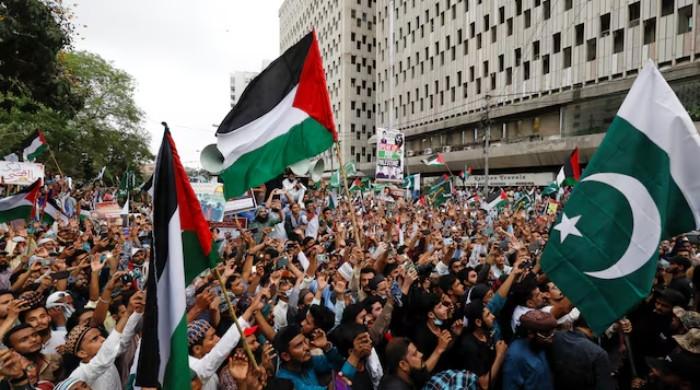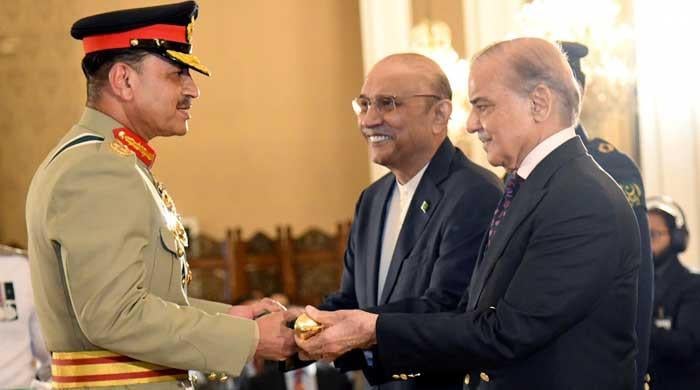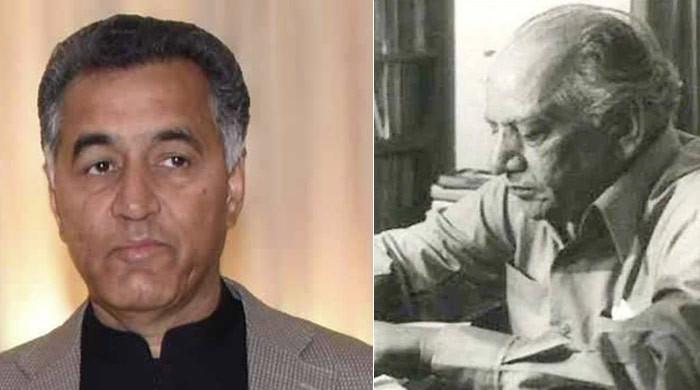Behind the scenes of PPP’s long march
No-confidence motion against PM Imran was moved to coincide with PPP rally's entry into Islamabad in the ides of March
March 12, 2022
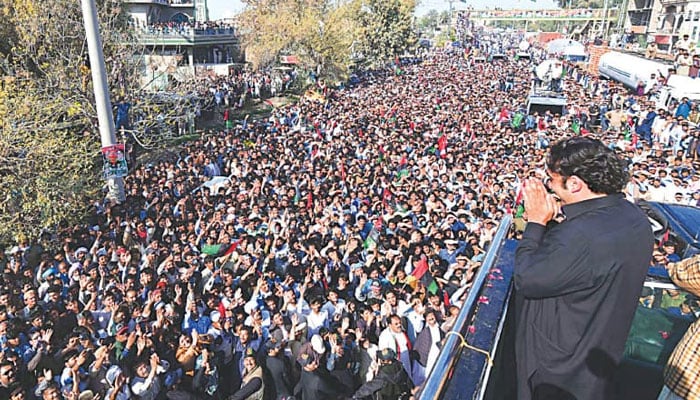
When Bilawal Bhutto-Zardari said he wanted the PPP to embark on a long march through the length of Pakistan, from Karachi to Islamabad, in a party meeting from Lahore, many of us warmed to the idea, as it could prove transformational if done right.
This was always a part of our plans when we were in the Pakistan Democratic Movement (PDM), but now it was the pressing need of the hour.
People were desperate for relief and empathy; they wanted to see political parties on the street with them as they suffered unprecedented inflation and needed to know that grassroots politics is not dead.
Progressive parties had to state their claim to the mainstream in a bigger way than we used to in the recent past, and put some real skin in the game.
Read more: PPP to stage sit-in after convoy stopped at D-Chowk
The party had also intellectualised this need at several meetings. It was put into a preamble and document, called ‘Why We March’, which was announced on February 26 in Karachi, at a press conference by the party chairman to kick off the march the evening before we set off from Karachi.
Even with the Awami National Party (AWN) pledging to join us from Khyber Pakhtunkhwa, the first question was how were we going to — on our own — undertake such a huge exercise, riddled with security and other pitfalls that have bedevilled progressive politics since the rise of extremist violence and terrorism in Pakistan.
For the PPP it was a core concern, especially after the assassination of Benazir Bhutto. The party literally lost critical ground in 2013, when we were told that campaigning in that election posed a real and present threat to the lives of senior leadership; there was also a prohibition on President Zardari campaigning on the ground for a minimum of two years. That story itself merits a more serious thought-piece.
Yet in 2022, Bilawal had come of age — clearly ready, despite the mottled shades of Pakistani politics, to go back to the people, outside of an election campaign.
Read more: The real reason behind PPP's Awami March
Then came a flood of other issues: how will we undertake this level of exercise by road; how will we carry, feed, and create rest areas for our supporters; how will we manage the rally as it gets longer up north; who will manage the middle and the tail. The challenges were onerous.
Funnily enough, this being the PPP, full of ‘jiyalas’ wanting to run into the barbed wire with a war-cry, no one was really worried about arrests or physical obstacles, some of which we faced on entering Punjab.
For us, the real problems were about smooth management of rest facilities for activists marching with us and maintaining momentum as we picked up steam.
No one had undertaken such a long journey without using a rail network. Even the religious parties, who have conducted marches using their madrassah back-bone of ready recruits and religion as a rallying cry, had not done this.
Read more: 'We will not tolerate this anymore,' Bilawal chides PM Imran on 'threat' to Zardari
Since the PPP has traditionally been wary of prolonged sit-ins, or the burning of electricity bills, or breaking any law, the path ahead seemed back-breakingly arduous, which it was, but the die was cast and the decision made.
Committees were immediately announced: operations, logistics, ‘tent city’ management, and media being the main teams.
The tent cities were put up at every night-stop planned, for supporters who joined the rallies as they moved up north.
This meant providing for their accommodation, bedding, heating, hot meals, low-cost washrooms, security, CCTV cameras, parking for buses, vans, cars, medical and healthcare facilities, and fire safety. These mini-cities ranged from 20,000 in size to 60,000 at peak.
Alternate accommodations were made by the local party in every night-stay site for women activists travelling, with our ticket-holders, MPs and MNAs. Thousands of non-local party leaders and activists were also put up at people’s homes, who welcomed us with open arms. Everyone contributed either buses, accommodation facilities, or both.
The Awami March also did not travel in one long, straight line. It went through the big cities and small towns of Sindh and Punjab as it wound its way up to Islamabad.
Rallies from Balochistan joined from Sindh, while our Khyber Pakhtunkhwa, Azad Kashmir and Gilgit-Baltistan party joined us right as we entered Rawalpindi on the last day to go on to Islamabad.
We started from Mazar-e-Quaid in Karachi to Thatta, Sujawal, Badin, and Matli. From Matli we went on to Hyderabad, Hala, Sakrand, Moro, then onwards on a long stretch to Khairpur and Sukkur.
From Sukkur we went on to Ghotki, Sadiqabad, and then Rahimyar Khan. Welcomed by huge spontaneous crowds, we went up to Ahmadpur East, Lodhran and then Multan, which was a large tent city consolidation-stop. From there on day six, we went into central Punjab through Sahiwal, Khanewal, Okara, Pattoki, Phool Nagar and then the edge of Lahore, with much-unexpected speech stops for Bilawal, as the crowds would just block our vehicles with rose petals and love.
We entered Lahore the next day at Nasir Bagh to a jubilant jalsa rocked by our signature anthems as well as songs in Punjabi.
Other than the nationally beloved ‘Dilla Teer’ from Benazir Bhutto’s campaigns, the most popular were ‘Yai Jang Hai’, by Kashif Gujjar, and a re-casting of ‘Bhutto Dai Naray Wajaan Gai’ by Moazzam Ali Moazzam, which were blaring through our loudspeakers on the lead truck and tail vehicles, literally almost on repeat, because people would signal to replay them.
Sindh was generous with its outpouring of love, which in all its forms should never be taken for granted, but it was the joyous Punjab wave that signalled the interest of a new generation in search of progressive politics, and the return of many old jiyalas who had wandered off.
From Nasir Bagh to Muridke to Gujranwala, and then Wazirabad, the weather turned bitterly cold after sunset, particularly on the lead open truck we sat on from morning to late night.
Lunch was junk food picked up on the way, with little ability to even drink tea because it would spill during the bumpy ride. The highlights on the food end were Matiari sending up its ice cream, and Shahdara sending up its famous khoya kulfis.
The test of endurance passed faster than we thought due to the motivational songs, the camaraderie, the love of the people welcoming us everywhere, and Bilawal sitting with us all the time on the hard planks of the open lead truck through the day’s scorching sun and the night’s extreme windchill.
From Wazirabad on day nine, we went on to Gujrat, Lalamusa, Jhelum, Gujjar Khan, to Rawat, the last night stop and tent city. By the time we reached Islamabad on day 10, we had logged more than 2051 kilometres, covering 49 cities and towns. At peak participation, the rally grew to 31 kilometres in central Punjab.
This was no five-star picnic, but an unprecedented undertaking in scale and ambition.
It was historic in many ways, but mostly it was the journey in which the PPP reconnected to its beating red heart.
The final Islamabad jalsa was mammoth, even though wall-to-wall relentless coverage was not accorded on TV for days. The no-confidence motion against the prime minister by the joint opposition was moved to coincide with our entry into Islamabad in the ides of March.
It is, as we always said, the only constitutional way to remove a PM who won’t see the writing on the wall. As the PPP’s Awami March amply demonstrated in the mood of the Pakistani street, the people have spoken.
The writer is vice-president of the PPP-P and parliamentary leader of the party in the Senate of Pakistan.
Originally published in The News




